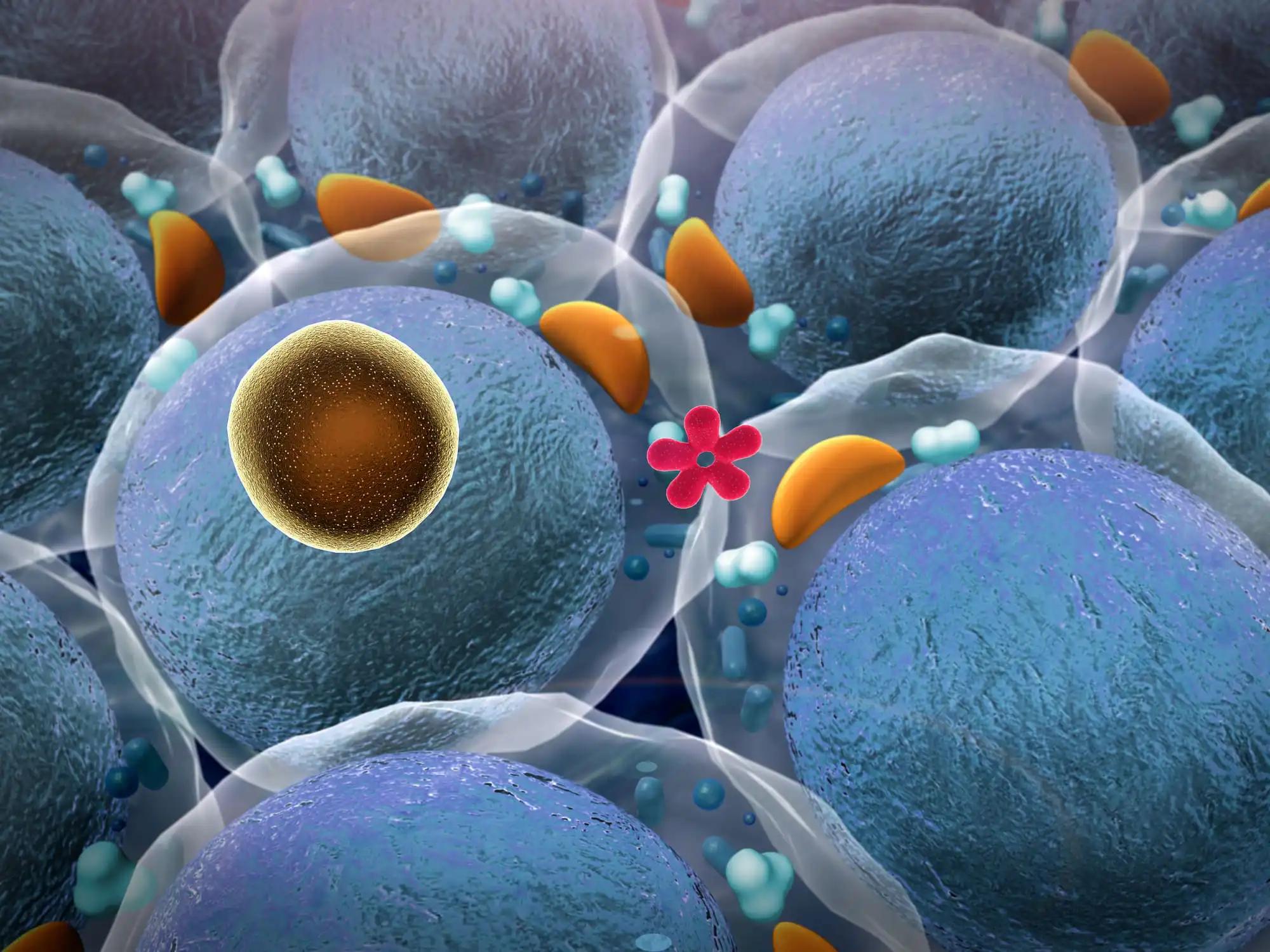KEY TAKEAWAYS
- The LAURA phase 3 trial aimed to assess the efficacy and safety of Osimertinib, post cCRT in pts with NSCLC.
- The primary endpoint was PFS & secondary endpoints were OS and safety.
- Researchers revealed a significant improvement in PFS with tolerable AEs and consistent safety profile
In about one-third of patients (pts) with unresectable stage III non-small cell lung cancer (NSCLC), EGFR-mutations take place, and consolidated durvalumab is a standard for the treatment of pts with unprogressed NSCLC post-chemoradiotherapy (cCRT) with uncertain benefits in pts with mutated EGFR NSCLC.
Osimertinib (osi), a third-generation CNS-active EGFR tyrosine kinase inhibitor (TKI), is recommended for the treatment of advanced/metastatic and resectable EGFR-mutated NSCLC.
In phase 3 (LAURA) trial, Suresh S. Ramalingam and the team aimed to determine the efficacy and safety of osi post-cCRT.
Eligible pts, having an age ranging from 18-20 or above, with WHO PS 0/1, diagnosed with unresectable stage III EGFR-mutated NSCLC, were subjected to the definitive platinum-based cCRT/sCRT without progression.
Patients were stratified based on cCRT vs sCRT, stage IIIA versus IIIB/IIIC, and Chinese versus non-Chinese backgrounds before randomization in a 2:1 ratio to receive either osi 80 mg or placebo(PBO) once a day until disease progression was confirmed by blinded independent central review (BICR) or discontinuation.
Brain imaging by MRI was made mandatory at baseline every 8 weeks up to 48 weeks. Afterwards, every 12 weeks until progression was determined by BICR. Open-label OSI was an option post-progression confirmed by BICR.
The primary endpoint was progression-free survival (PFS) assessed by BICR using RECIST v1.1 criteria. The secondary endpoints included overall survival (OS) and safety, with the data cutoff date of January 5, 2024.
About 216 pts were randomized, 143 received osi and 73 received PBO, with baseline generally balanced baseline characteristics; osi significantly improved PFS compared to PBO by blinded-independent central review, with an HR of 0.16 (95% CI 0.10, 0.24; P<0.001), which resulted in a median PFS of 39.1 months (95% CI 31.5, not calculable) vs 5.6 months (95% CI 3.7, 7.4) for osi and PBO, respectively, and 12-month PFS rates of 74% osi versus 22% PBO and 24-month progression-free survival rates of 65% osi vs 13% PBO.
They reported that the PFS (HR 0.19; 95% CI 0.12, 0.29; P<0.001) values were clearly being aligned with BICR findings and consistent with significant improvements across already defined subgroups. Provisional OS analysis (20% maturity) evaluated a trend favoring osi (HR 0.81; 95% CI 0.42, 1.56; P=0.530), with 81% of placebo arm pts who were receiving osi post-progression.
Frequent adverse effects(AEs), including all-causality events (98% vs 88%), ≥Grade 3 events (35% vs 12%), serious events (38% vs 15%), and radiation pneumonitis (48% vs 38%); most were Grade 1/2. Discontinuation due to any AE occurred in 13% vs 5% of osi versus placebo pts, respectively.
Osimertinib post-CRT showed a statistically significant improvement in PFS in unresectable NSCLC, with no unforeseen safety concerns.
The trial was sponsored by AstraZeneca
Source: https://meetings.asco.org/abstracts-presentations/234898
Clinical trial: https://clinicaltrials.gov/study/NCT03521154
Ramalingam S S, Kato T, Dong X, et al. (2024). “Osimertinib (osi) after definitive chemoradiotherapy (CRT) in pts with unresectable stage (stg) III epidermal growth factor receptor-mutated (EGFRm) NSCLC: Primary results of the phase 3 LAURA study.” Presented at ASCO 2024. J Clin Oncol 42, 2024 (suppl 17; abstr LBA4), DOI: 10.1200/JCO.2024.42.17_suppl.LBA4



